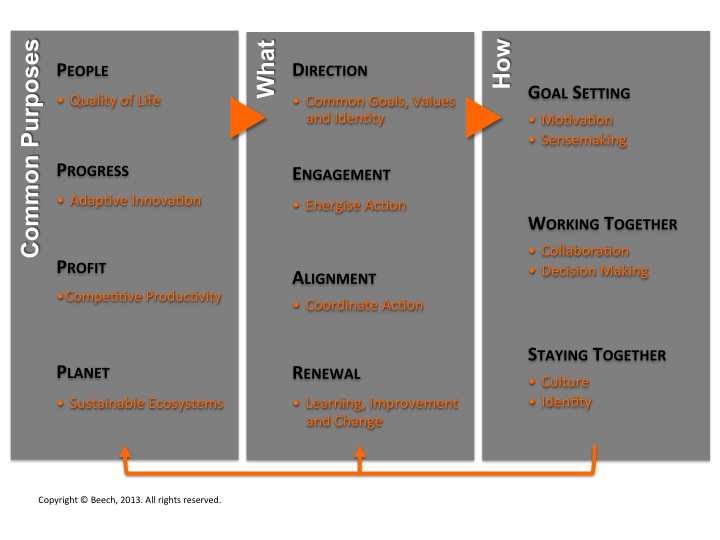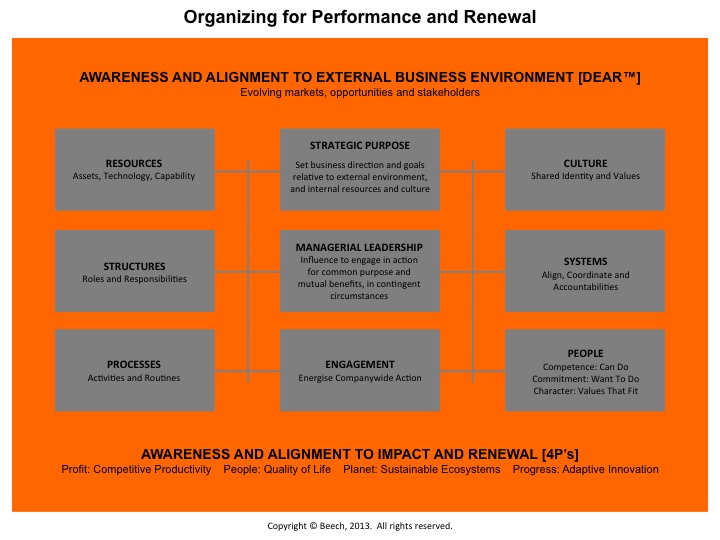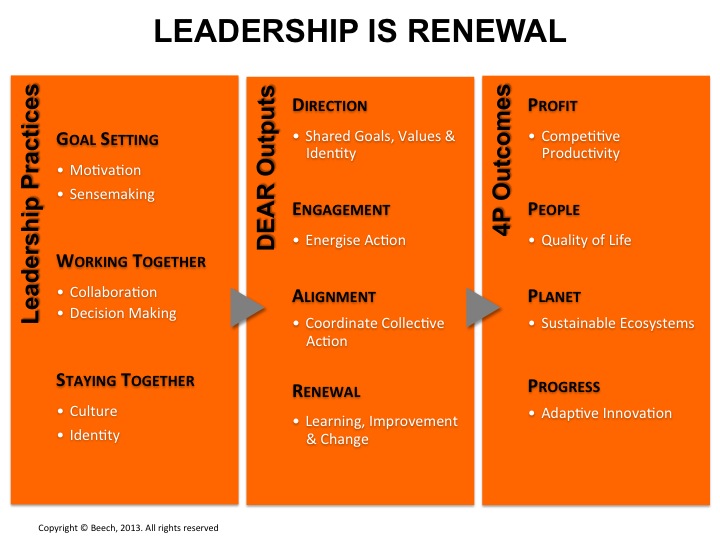“… if variations useful to any organic being do occur, assuredly individuals thus characterised will have the best chance of being preserved in the struggle for life.” Charles Darwin, 1859
Variations – new combinations – which prove useful provide the foundations for adaptive renewal. Useful variations that enable adaptive renewal can be a response to change in circumstances or can initiate change in circumstances, such as new products, processes, and business models that drive progress in the struggle to survive and flourish on a global commons with limited resources.
In the creative competition for performance and renewal, effective managerial leaders influence people to contribute to a range of generic common purposes and an infinite variety of 4P outcomes: quality of life for people in producing and consuming goods and services; adaptive innovation that sustains and renews progressive change for people, profit, and planet; competitive productivity in producing and distributing goods and services at a profit; and sustainable consumption of the earth’s raw materials and stewardship of ecosystems. Effective leaders exercise the reciprocal influence that engages people in action for common purposes and mutual benefits in contingent circumstances.
Leaders enable common purpose outcomes by establishing DEAR outputs: the common goals, values and identity required for shared direction; energising reasons for contributing to action; alignment and coordination of information, decisions, and activities across the different roles and contributions of individuals and groups; and relentless reflection on processes, results, and mental models and learning from them to harness and initiate continuous variation and renewal in coordinating and evolving collective action for common purposes and mutual benefits. This is the what of managerial leadership.
The processes of goal setting, working together, and staying together define the how of managerial leadership. These processes apply across all contexts of leadership: frontline delivery; operational systems; strategic market position; and institutional legitimacy. All aspects of these processes are informed by the evolving dynamics of cooperative and competitive relationships in the implementation and innovation tasks of competitive performance and renewal.
This original synthesis of robust findings from organisation and leadership science provides the basis for a range of powerful tools, initiatives, and programmes to support organisations, teams, and individuals in developing, deploying, and renewing continuously their leadership capabilities in order to survive and flourish in the new era of business.








